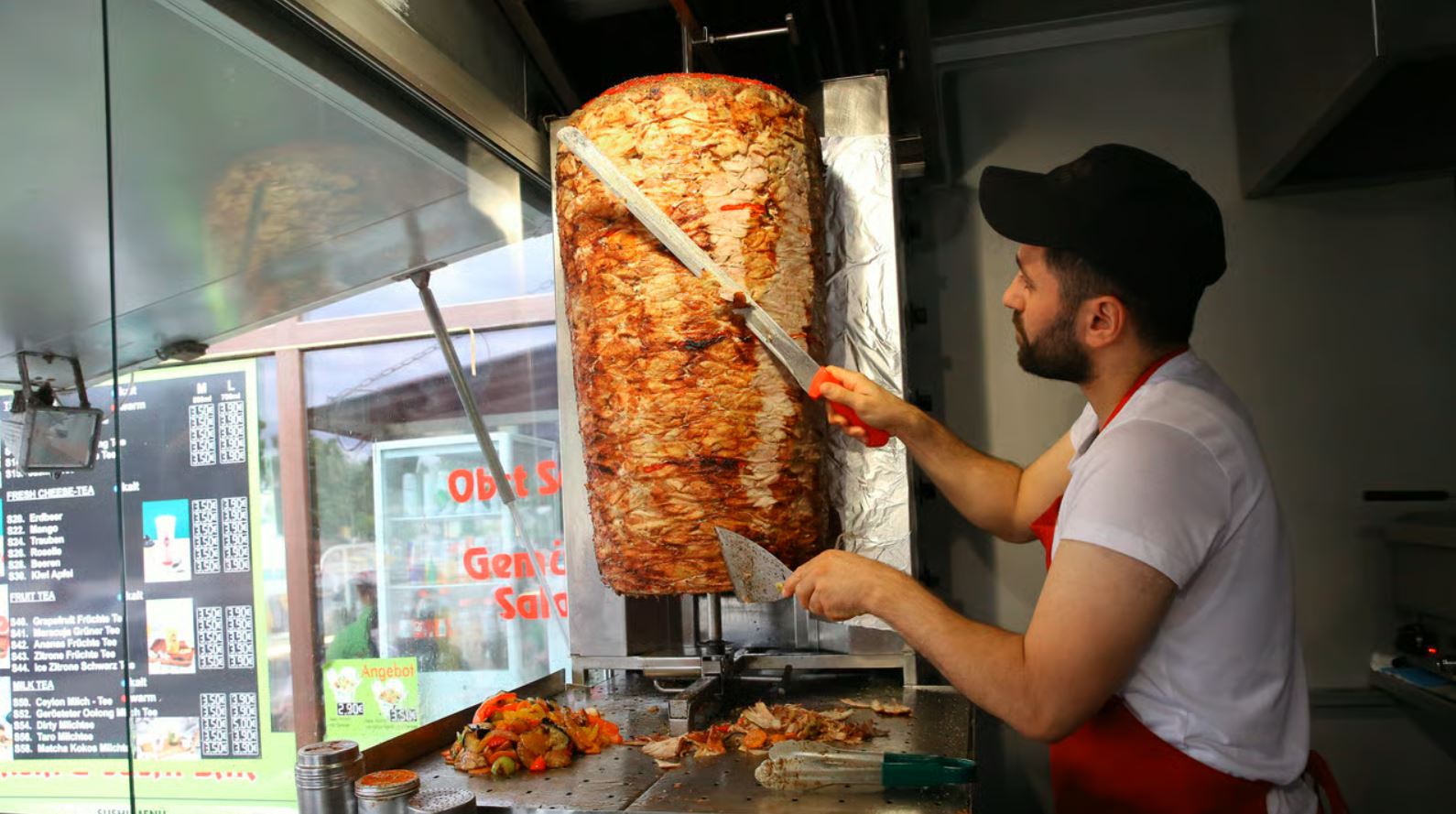A.J. Griffiths-Jones
Walk down any main street in Europe and you will find a doner kebab shop. For the British, in particular, this tasty meal is a staple takeaway after a night out drinking beer with friends, but for those who haven’t visited Turkiye they’re missing out on the more traditional and delicious versions of this sliced and grilled meat dish.
Said to have first appeared in Istanbul in the mid-1960’s the sandwich form of the doner was actually introduced to the West by Kadir Nurman, a Turkish worker living in Berlin, who sold his first doner kebab across from the Bahnhof Zoo in 1972. Since then, its popularity has become world famous, but what about the lesser-known skewered fare?
Of course, larger cities across the world are home to some great Turkish restaurants serving traditional meals, but there’s nothing quite like tasting a local dish served up by a chef who has a passion for his country’s food. So, what’s what and how do we know what to order?
The most classic of kebabs is the shish, marinated chunks of meat that are skewered and usually served with rice and vegetables.
There is also Cop Sis (pronounced chop sheesh) which is made from the offcuts and lamb fat, traditionally mixed with olive oil and herbs.
Originating from the city of the same name, an Adana kebab is made from minced beef or lamb and mixed with a blend of spices before being skewered but be warned as these are sometimes incredibly spicy.
An Urfa kebab is very similar, but is made with sweet paprika, a great alternative to those who like their food milder.
Of course, for consumers who don’t eat red meat, chicken kebabs are equally delicious and are usually marinated in yoghurt and spices before cooking.
If you’re lucky enough to find an outlet selling Beyti, be sure to give it a try. An ancient recipe dating back to the Ottoman Empire, these consist of rolled and sliced ground meat spread onto traditional flatbread that are then rolled up and sliced into rounds.
A more unusual meal is the Patlicanli kebab, delicious meatballs skewered alternately with chunks of aubergine (eggplant) which is well worth a try.
There is also the Ali Nazik Kebab, sometimes called the Polite Ali, which comprises grilled lamb marinated on a bed of fire-roasted aubergine and yoghurt.
My personal favourite, and my husband’s too, is the Iskender, thinly shaved slices of doner meat served on warm pide bread cut into squares and then dotted with melted butter, fresh tomato sauce and yoghurt.
Now that our taste buds are well and truly tingling, there is one big difference in eating a kebab from a European takeaway and enjoying it on Turkish soil, which is the omission of chips!
Most people in the UK would automatically order a portion of fries to accompany their Friday night doner, whereas here on the kebab’s native soil it’s usual to eat your meal with rice, bread and salad.
However, with the growth of tourism, more and more restaurants have started serving their local delicacies with chips on the side and in some holiday spots it’s become the norm. For me, it has to be traditional, better to savour the delicious taste of grilled meat without a greasy potato slice cluttering up my plate.
So, if you’re heading out for a Friday night beer, be sure to seek out the best kebab shop or restaurant in your area, you might well find yourself surprised at the choices available. If, like me, you want to try your food how the locals eat it, put a hold on the chips!
